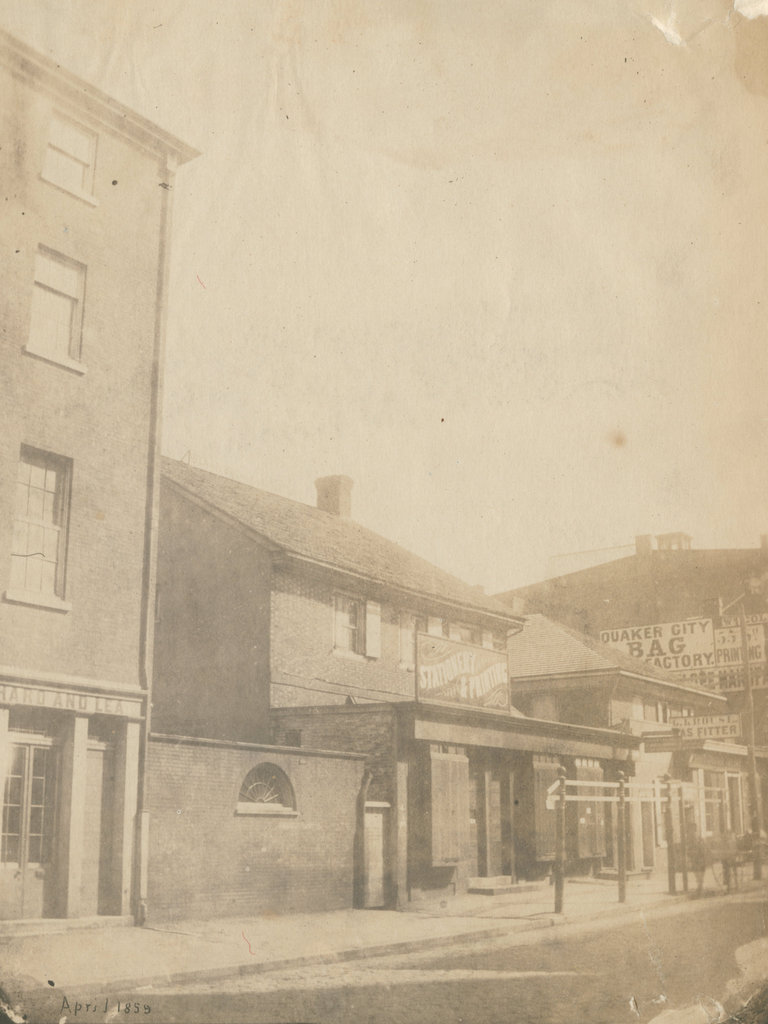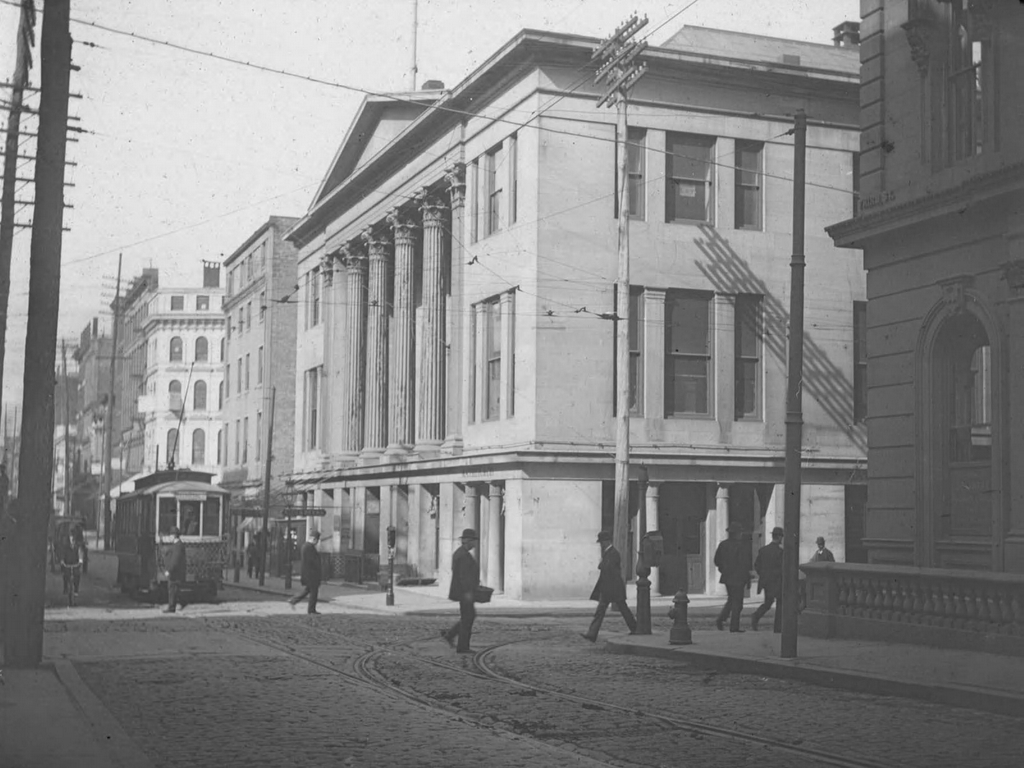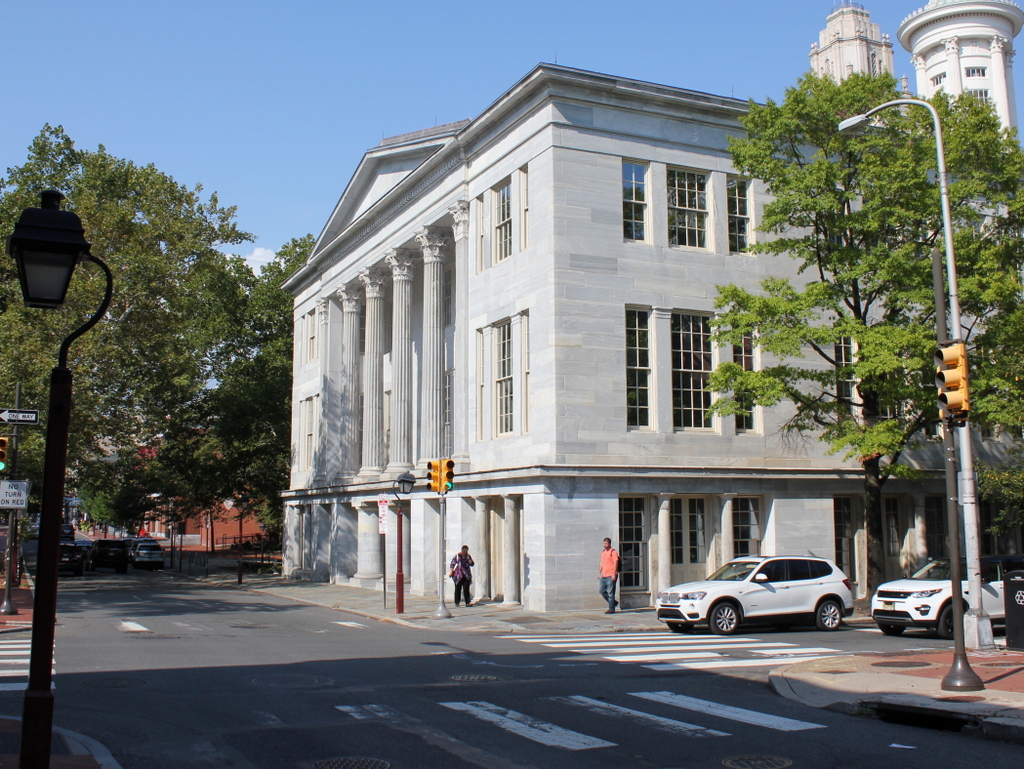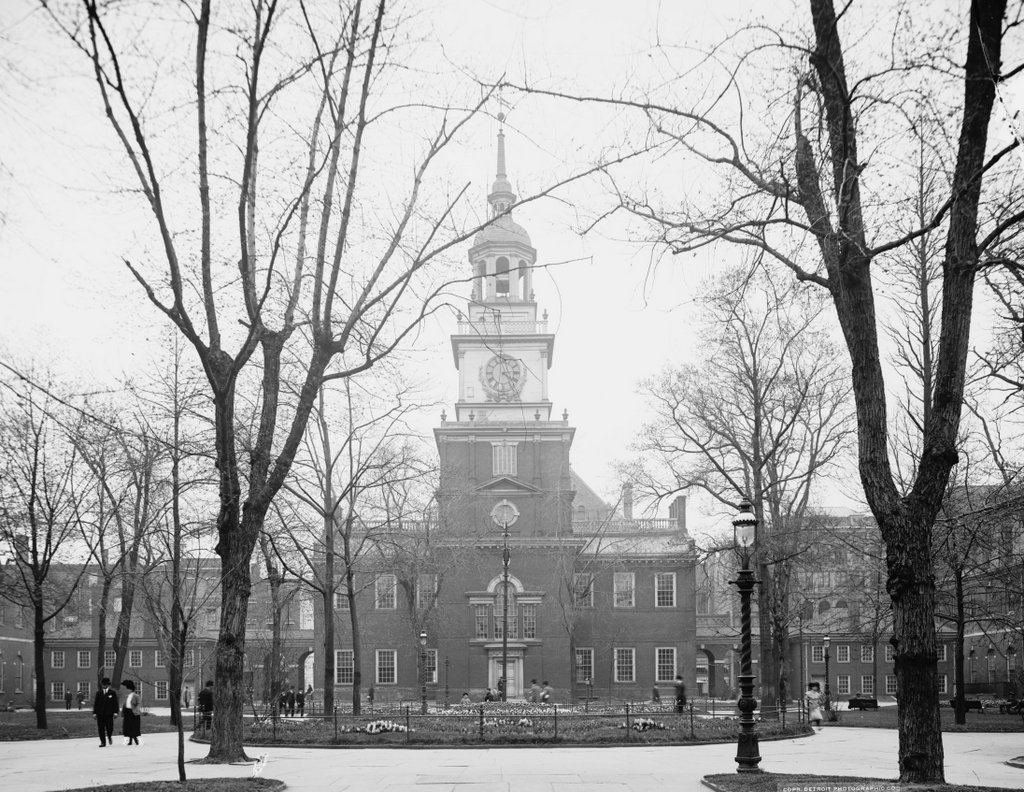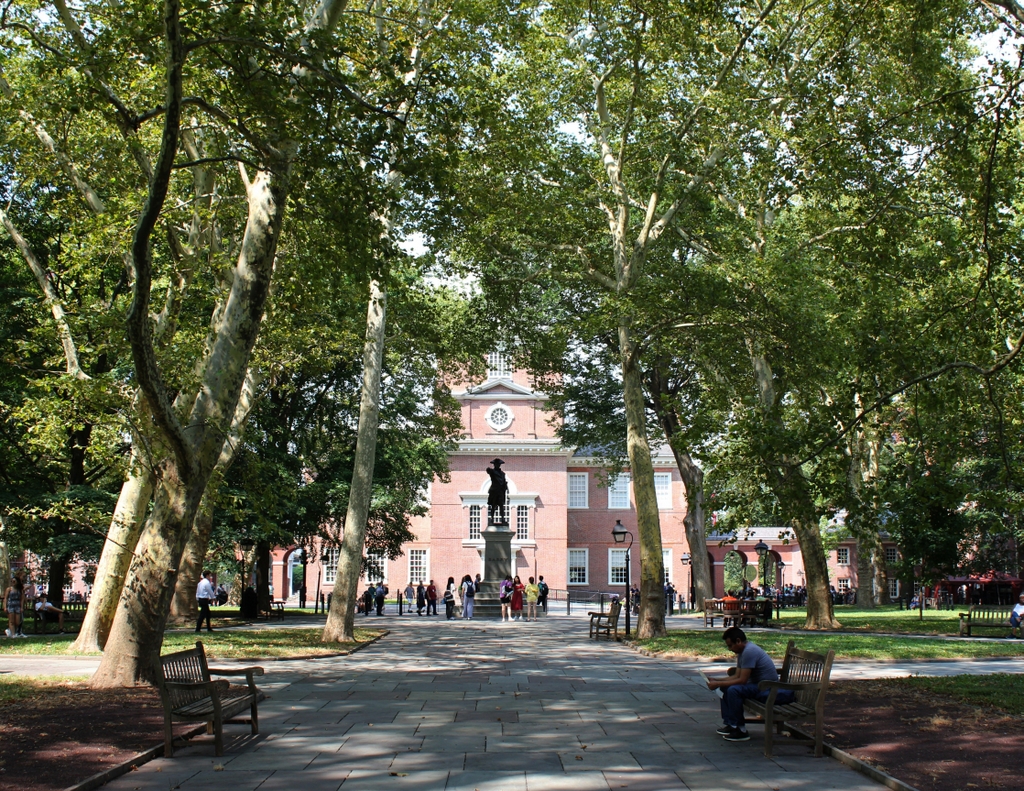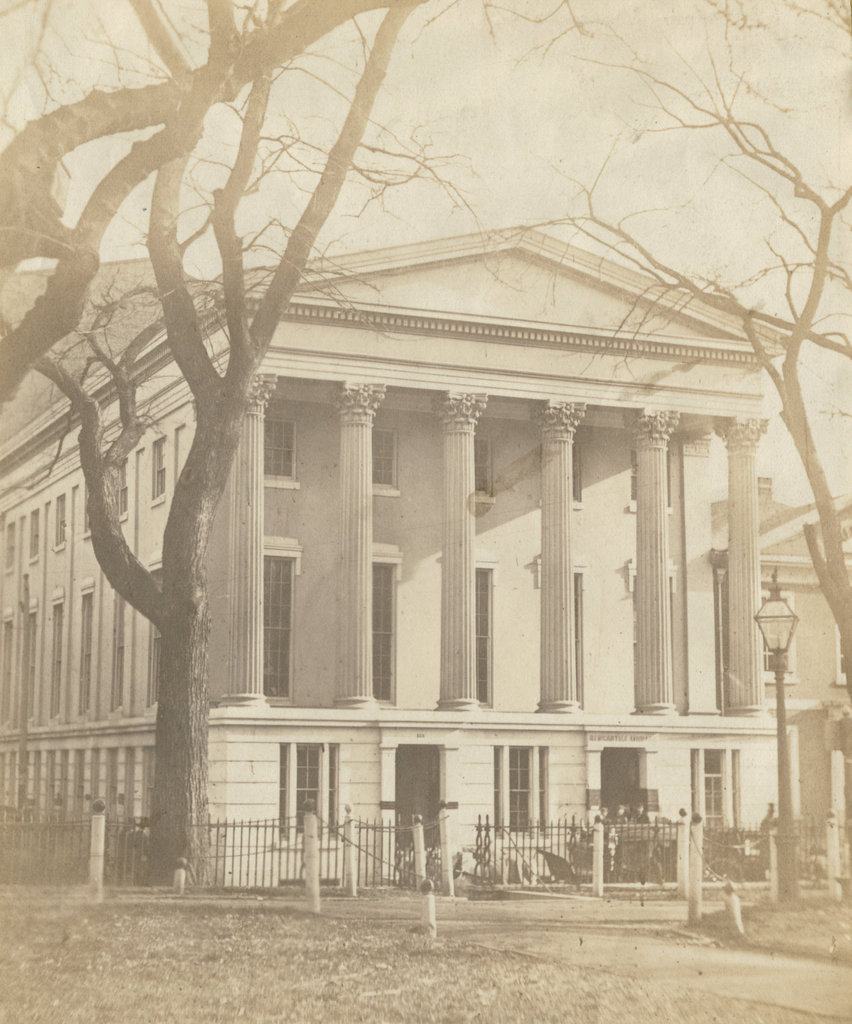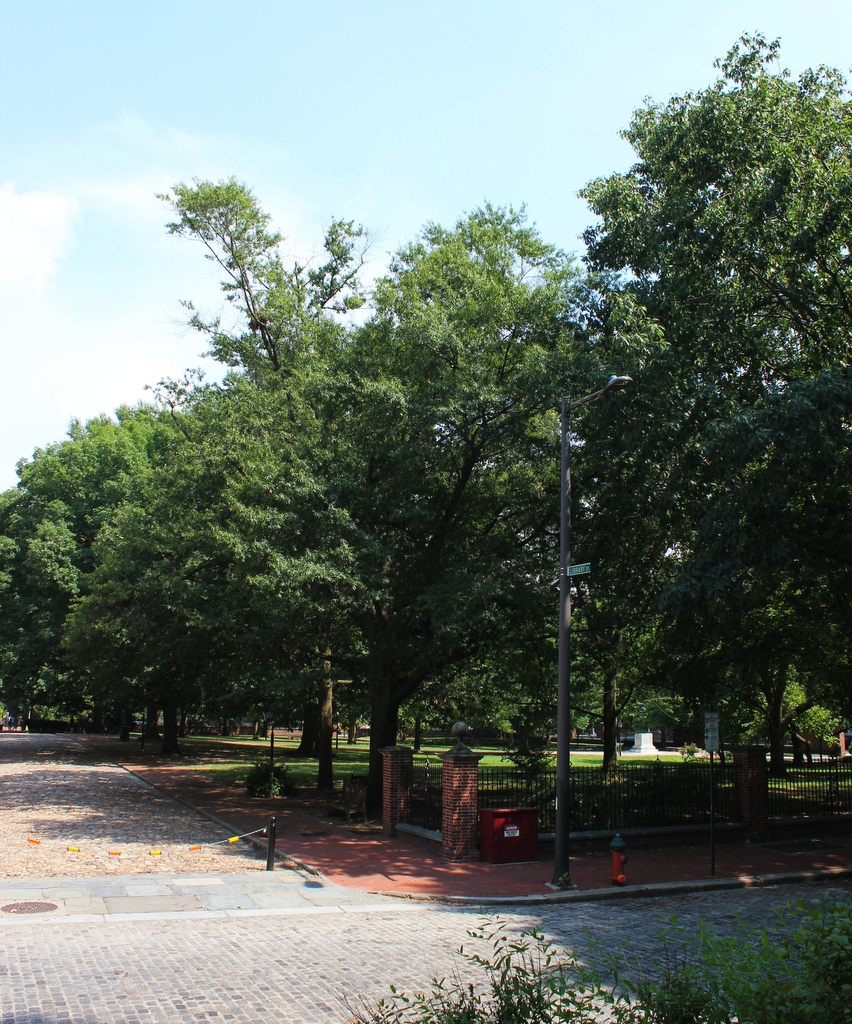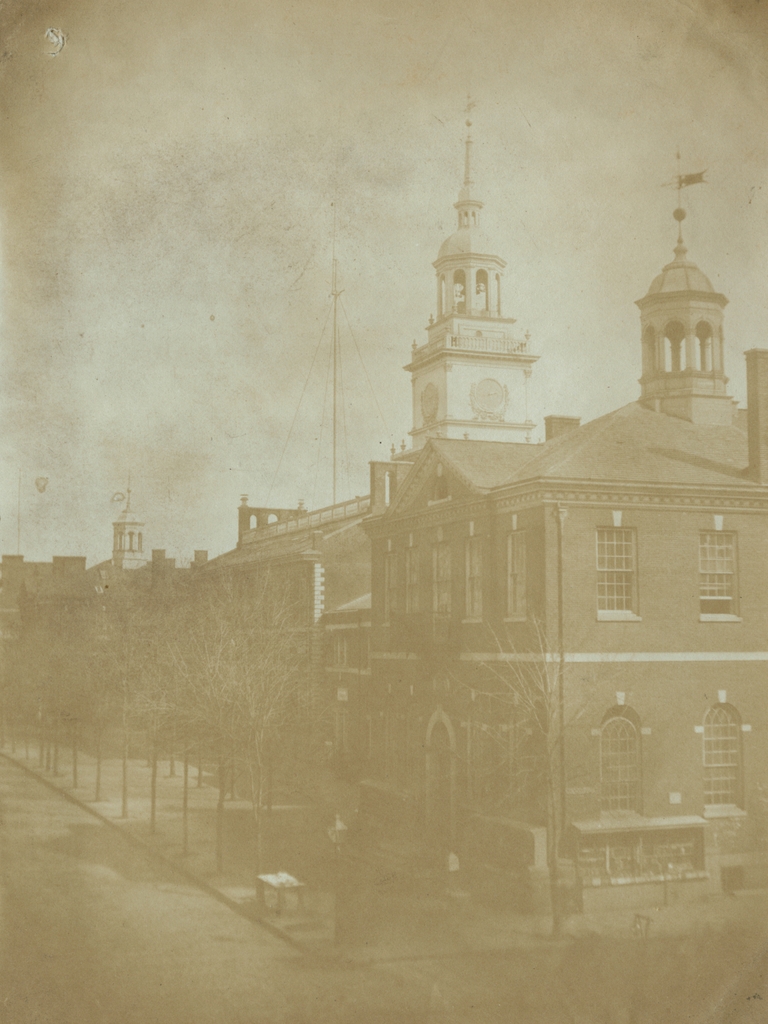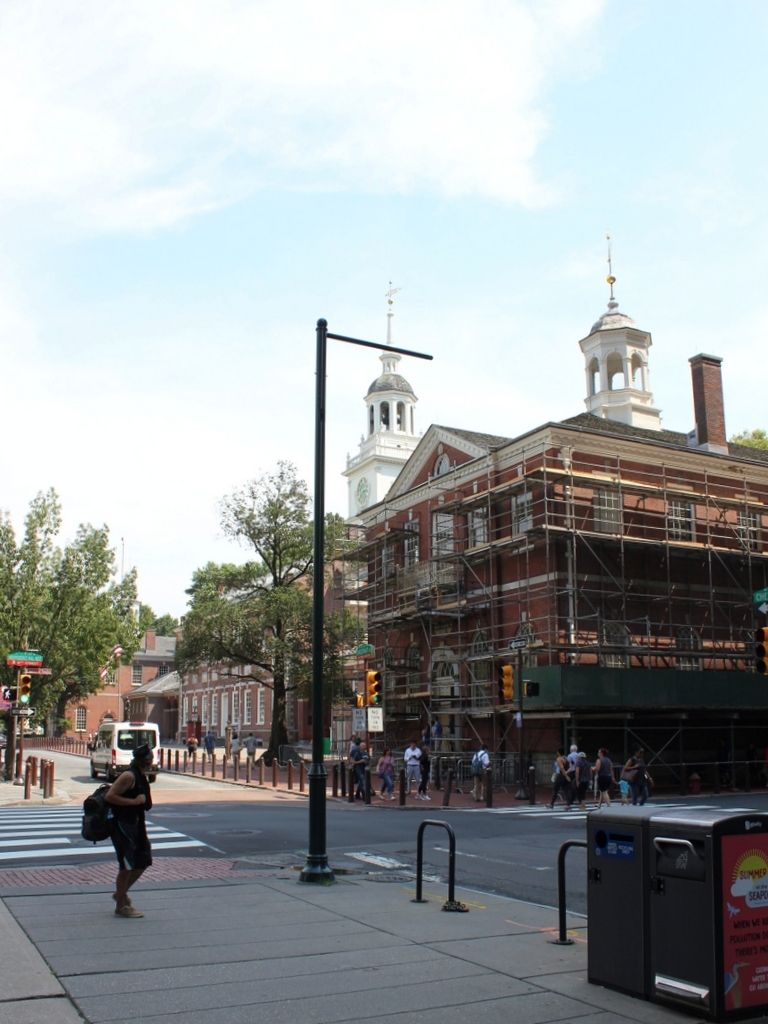Saint Paul’s Episcopal Church, on the east side of Third Street just south of Walnut Street in Philadelphia, in April 1859. Image courtesy of the Library Company of Philadelphia, Frederick De Bourg Richards Photograph Collection.

The church in 2019:
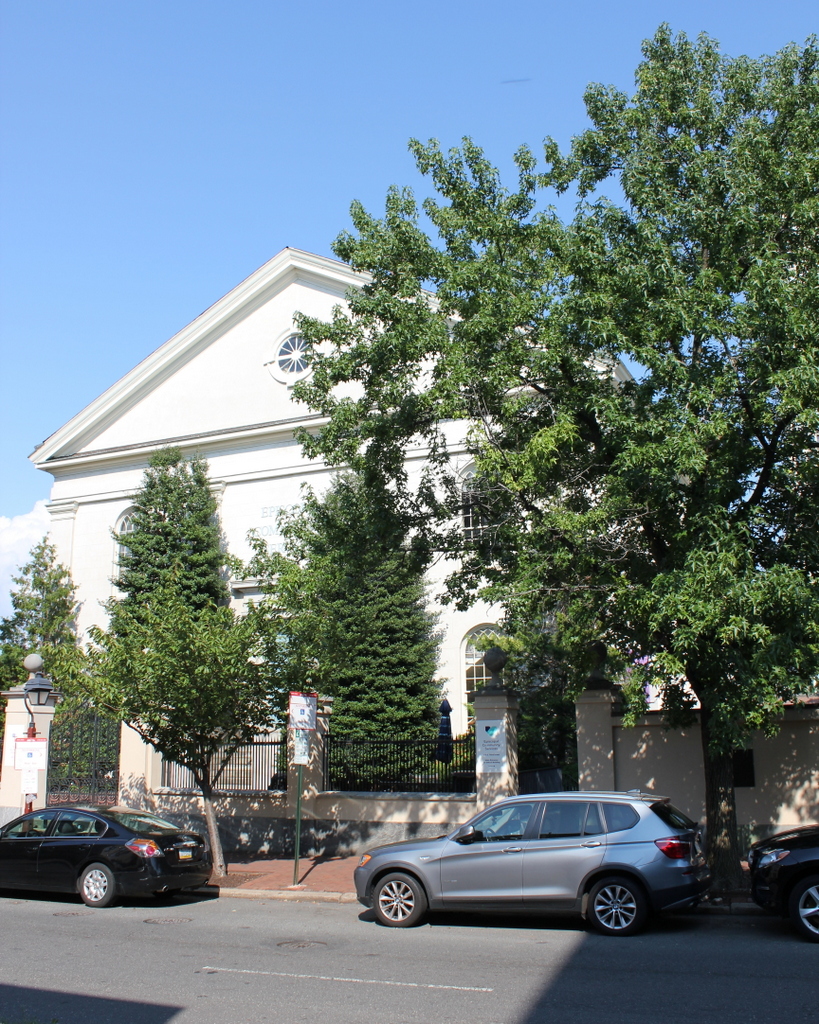
St. Paul’s Church was established in 1760 by a group of parishioners from Christ Church, the city’s oldest Anglican church. They separated from Christ Church because of a controversy surrounding William McClenachan, a former Presbyterian minister who was associated with the evangelical beliefs of the Great Awakening. Some of the leaders within the church, along with the bishop of London, had blocked McClenachan from receiving a position at Christ Church, apparently because of concerns about his past affiliations and support among local Presbyterians. His followers responded by leaving and forming St. Paul’s Church, with McClenachan as their minister. They met for the first time at Independence Hall on June 22, 1760, and they soon began work on their own church building, which would be located here on Third Street.
To help fund the construction costs, the church organized a lottery. This was a common way of raising money during this time, both for public and private projects, and the church hoped to raise 3,000 pieces of eight through the lottery. An advertisement for the lottery appeared in the January 29, 1761 issue of Benjamin Franklin’s Pennsylvania Gazette, with the following description:
As a new Church, called PAUL’s – CHURCH, has been thought necessary, for the Worship of ALMIGHTY GOD, to be erected in this City, by many well disposed Christians; who have, according to their Abilities, chearfully subscribed, and many of them paid considerable Sums of Money, towards carrying on this pious Work. In Consequence whereof, a very large and commodious Building hath been begun, and carried on to the full Height of the Brick Work: But it being judged that the Expence of completing and finishing this Church, will greatly exceed the Sums subscribed; therefore it is thought expedient to set up a LOTTERY, for the raising 3000 Pieces of Eight, which it is hoped will compleatly finish the said Church; and not doubted but all well Wishers to the true Worship of GOD, will favour and encourage this Undertaking.
A total of 5,000 tickets were to be issued, at four dollars each, and the advertisement promised that “This Scheme is the most favourable one heretofore calculated in this City to the Adventurers, the Blanks and Prizes being considerably less than two to one.” There were many tiers of prizes, ranging from 1,515 tickets that would win 8 pieces of eight each, to a single grand prize of 1,000 pieces of eight.
The church was ultimately completed later in the year, and the first services were held here on December 20, 1761. Reverend McClenachan was still the rector at the time, although he would only remain in the position for a few more years; he retired in 1765 and moved to Maryland, where he died a year later. His departure, however, may have helped to resolve the conflict between St. Paul’s and Christ Church, because in 1773 his successor, William Stringer, was ordained by the bishop of London.
Within a few years, though, Reverend Stringer himself would be a source of controversy within the church. During the American Revolution, Stringer remained loyal to the British crown, despite many parishioners with patriot sympathies. The division culminated in the fall of 1777, after the British army captured Philadelphia. On the next Sunday after the capture, Stringer preached from Ezekiel 20, which speaks of the rebelliousness of Israel, including a verse that was particularly incendiary given the context of the war: “And I will purge out from among you the rebels, and them that transgress against me.” Many of the church members interpreted this scripture selection as a thinly-veiled threat, and this sermon marked the end of Stringer’s tenure as rector; he soon left the church and returned to England.
During the 19th century, St. Paul’s had several rectors who achieved national prominence. Among these was Stephen H. Tyng, who served here from 1829 to 1833. He was a leader in the evangelical wing of the Episcopal Church, and much of his ministry was focused on providing social services and other outreach programs for the poor. During his time here in Philadelphia, he also focused some of his efforts on changing the physical church building. This included altering the interior to make space for Sunday school programs, along with removing elements that were considered old-fashioned by the 1830s, including the colonial-era high back pews. The project was overseen by prominent Philadelphia architect William Strickland, and the building was re-dedicated on New Year’s Day in 1831.
Aside from Reverend Tyng, the other notable 19th century rector here was R. Heber Newton. His father, Richard Newton, had served here from 1840 to 1862, and the younger Reverend Newton became rector in 1866 at the age of 26. He remained here for just three years, though, before leaving to accept the position of rector at All Souls’ Protestant Episcopal Church in New York City. While in New York, he became a leader in the Social Gospel movement. However, he also faced criticism from other Episcopalian clergy, and in 1883 he was charged with heresy for, among other things, supposedly denying essential doctrines such as the inerrancy of the Bible and the divinity of Jesus. He went on to face similar accusations in subsequent years, but retained his position within the church until 1902.
The first photo, which was taken in 1855, shows the exterior of the church as it appeared during Newton’s father’s time as rector. It would remain an active parish throughout the rest of the century, but in the later years it experienced a decline. This neighborhood, which had once been a fashionable residential area in the 18th and early 19th century, was no longer as desirable, and many of its affluent parishioners had relocated elsewhere in the city. Attendance in general dropped, as did church revenue, to the point where it could no longer support itself. As a result, in 1901 the church’s leaders requested that it be dissolved, with its property transferred to St. Peter’s Church, which is located just a few blocks south of here.
Despite this closure, the old St. Paul’s building ultimately remained in use by the Episcopal Church. Today, nearly 170 years after the first photo was taken, the building is still standing with few exterior alterations. It is no longer used for religious services, but since 1906 it has been the home of Episcopal Community Services, which offers assistance programs in areas such as food, housing, healthcare, and education. It seems only appropriate that the organization would be housed in this building, since in many ways it fulfills the Social Gospel-related ideals of its former ministers such as Tyng and Newton.

